That Synching Feeling from Insane Horizon on Vimeo.
In the audiovisual essay above, That Synching Feeling, Yusef Sayed focuses on the way that Brian De Palma's Blow Out is concerned with synching sound and vision, and how two key references (the Zapruder film and the Watergate tapes) each lack either audio or image, respectively. Along the way, Sayed also includes riffs on three films that strike him when thinking about Blow Out (read about those below or in Sayed's accompanying tumblr text). Don't expect to find any references to Chappaquiddick or The Conversation here, but what is here is rather interesting, nonetheless. Here is an excerpt (all but the first two paragraphs) from Sayed's essay (or read the entire essay at the Insane Horizon tumblr) :
"Jack Terry’s desire to prove beyond question that Governor McRyan was murdered depends on his ability to reconcile image and sound; to succeed where the Zapruder film and the Watergate tapes failed; to provide as full an account of the event as possible, to resolve as many unanswered questions as he can. But does truth really exist at the point of sychronisation? The irony is that Jack himself makes his living by fabricating reality, dubbing heterogenous audio onto low budget exploitation films. This paradox is what structures That Synching Feeling. The eyes and ears must strive to put things into place.
"It draws upon two key cinematic influences, Michelangelo Antonioni’s Blow-up (1966) and Alfred Hitchcock’s Dial M For Murder (1954) and source materials relating to the political events described. It handles these different materials in a way that reflects the techniques of Jack’s own working practice. Sound is aligned precariously with image and at times it will fool the viewer. We are displaced from one reality to another, as we are in the opening moments of Blow Out when the slasher pic we are immersed in is suddenly revealed to be the film that Jack is currently foleying for.
"The essay calls for the viewer to question what they are seeing and what they are hearing, to notice a detail that might stick out – a punctum, in Barthes’s term – a sudden puncture, that impacts on our senses and creates meaningful engagement with the matter at hand. All the while it aims to put all the pieces together into a meaningful whole; to create a pattern; to create resonances; to reconstitute a stable order amidst the violence and lies, with attention to shot composition, camera movement and gesture, aural echoes.
"Surprising connections are also presented, of a sort that might thrill a conspiracy theorist – or an auteurist, seeing links, intentional or not, among the works of their favourite directors in an attempt to root out some sort of consistent voice: There’s the fact that Jack is an audio specialist who finds himself in the middle of a political murder; that a professional drummer named Steve Barber heard police radio frequency recordings from Dealey Plaza, released on a ‘paper record’ with an issue of Gallery magazine in 1979, and was prompted to develop his own view on the assassination of JFK; that a drummer, too, is at the centre of another murder mystery, Four Flies on Grey Velvet (1971) – directed by Dario Argento, whose style bears intriguing similarities with some of De Palma’s best work – moments of which echo Blow Out; that Jackie Kennedy’s last words to her husband were 'Jack, can you hear me?' a line of dialogue which also appears in Blow Out.
"That Synching Feeling is intended to enter the world of the film and to immerse the viewer in the shifting realities, the doubts, the history, the fabrications, secrets and the melancholy that it evokes."
 Some surprising news hit this morning as the Venice Film Festival announced its line-up. Among the non-fiction films revealed is a 109-minute documentary called De Palma, co-directed by Noah Baumbach and Jake Paltrow. Variety's Nick Vivarelli notes that the film marks "the first time the somewhat reclusive Brian De Palma talks in-depth about his life and career." Baumbach and Paltrow are friends of De Palma's, of course, and Baumbach has interviewed De Palma on camera twice now for separate Criterion releases: Blow Out, and the upcoming Dressed To Kill. The pair (De Palma and Baumbach) have also appeared on stage together at the New York Film Festival.
Some surprising news hit this morning as the Venice Film Festival announced its line-up. Among the non-fiction films revealed is a 109-minute documentary called De Palma, co-directed by Noah Baumbach and Jake Paltrow. Variety's Nick Vivarelli notes that the film marks "the first time the somewhat reclusive Brian De Palma talks in-depth about his life and career." Baumbach and Paltrow are friends of De Palma's, of course, and Baumbach has interviewed De Palma on camera twice now for separate Criterion releases: Blow Out, and the upcoming Dressed To Kill. The pair (De Palma and Baumbach) have also appeared on stage together at the New York Film Festival.





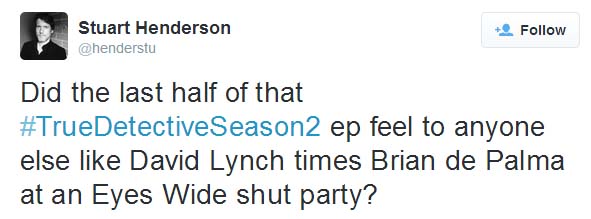
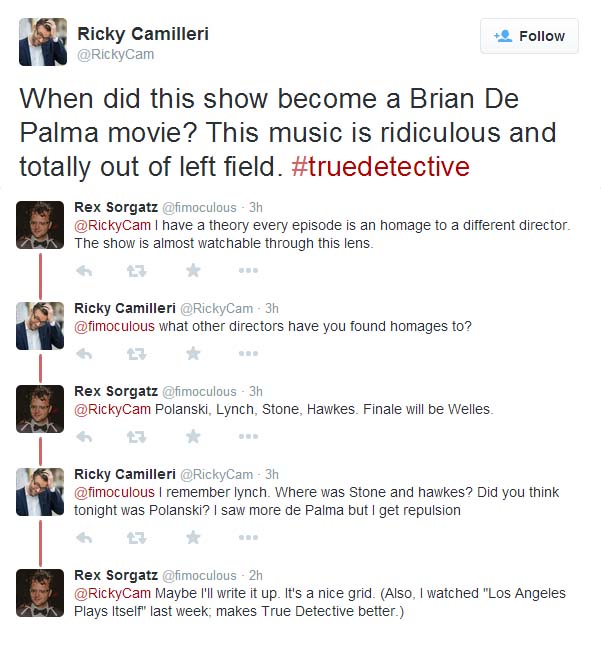
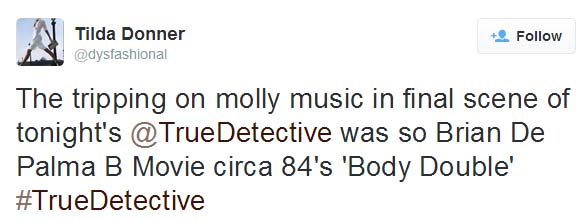


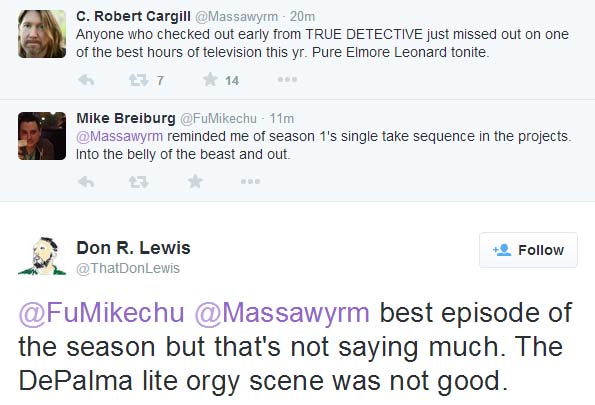

 In the new film Trainwreck, written by Amy Schumer and directed by Judd Apatow, Schumer plays Amy, who makes it clear right from the start that she enjoys casual sex, drinking, and various drugs. Early in the film, she awakens from one boozy night in a bed that is not her own. As she opens her eyes, we see her look around the room, from her point of view, and the first thing she sees is a Scarface poster (from the 1983 film) hanging on the wall. The camera briefly pauses on the poster, in the center of the frame. She verbally notes the Scarface poster and begins muttering to herself as her eyes continue to dart around the room, "Please don't be a dorm room... please don't be a dorm room." It's a quick gag that got a lot of laughs at the packed theater in which I viewed Trainwreck the other night.
In the new film Trainwreck, written by Amy Schumer and directed by Judd Apatow, Schumer plays Amy, who makes it clear right from the start that she enjoys casual sex, drinking, and various drugs. Early in the film, she awakens from one boozy night in a bed that is not her own. As she opens her eyes, we see her look around the room, from her point of view, and the first thing she sees is a Scarface poster (from the 1983 film) hanging on the wall. The camera briefly pauses on the poster, in the center of the frame. She verbally notes the Scarface poster and begins muttering to herself as her eyes continue to dart around the room, "Please don't be a dorm room... please don't be a dorm room." It's a quick gag that got a lot of laughs at the packed theater in which I viewed Trainwreck the other night.
 Now that the footage has been made available to fans, and in high-quality formats, the
Now that the footage has been made available to fans, and in high-quality formats, the 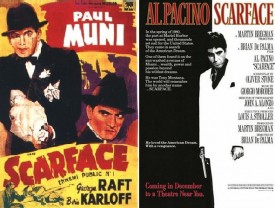 In an interview with
In an interview with